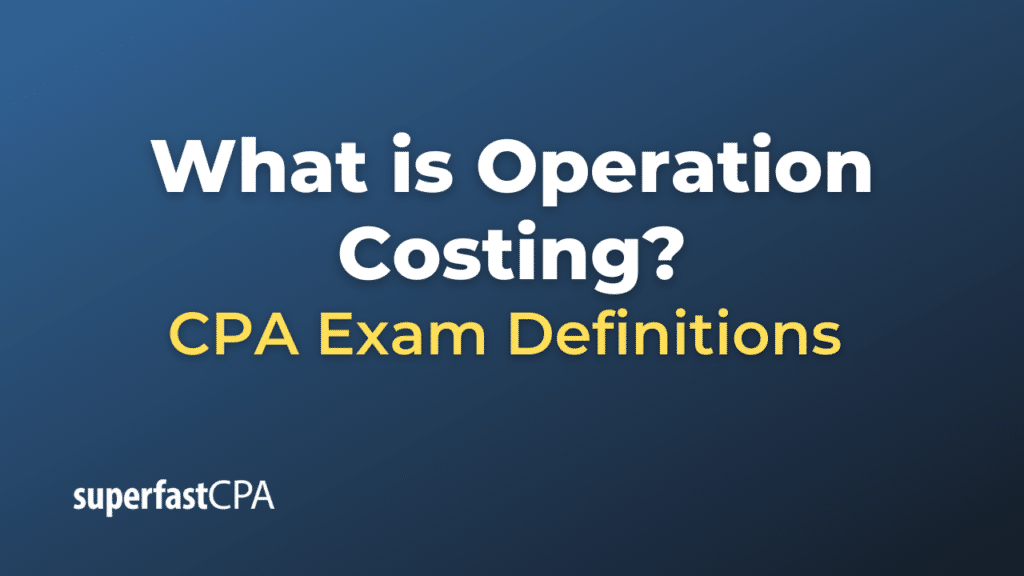Operation Costing
Operation costing, a term used in cost accounting, is a hybrid system of both job costing and process costing. It’s typically used in manufacturing environments where goods are produced in batches (as in job costing) but also have a significant amount of continuous processing (as in process costing).
In operation costing, direct materials are often traced to individual jobs, batches, or production orders just as they are in job costing. On the other hand, conversion costs (i.e., direct labor and manufacturing overhead) are generally allocated to production departments or processes, similar to process costing.
Let’s break it down:
- Direct Materials: These are the costs of all the materials that form a significant part of the finished product. They are directly traced to each job or batch.
- Conversion Costs: These are the costs incurred to convert the direct materials into finished products. They include direct labor (the cost of wages paid to workers directly involved in the manufacturing process) and manufacturing overhead (all other costs related to the production process, such as indirect labor, indirect materials, and factory overhead). Conversion costs are generally allocated across departments or processes using a predetermined overhead rate.
Operation costing is especially useful in industries where products pass through different departments or stages of production and each stage adds different materials or components to the product. This includes industries such as electronics manufacturing, clothing production, or food processing.
By accurately tracing and allocating costs, operation costing helps businesses determine the cost of producing each unit of product, set appropriate selling prices, identify inefficiencies, and make informed decisions about production processes and product profitability.
Example of Operation Costing
Let’s consider a company that manufactures custom-made furniture. This is a good example for operation costing because each piece of furniture (each job) has unique direct material costs, while conversion costs are spread across multiple departments.
Here’s how the operation costing system could work in this scenario:
Step 1 – Direct Materials:
Let’s say a customer places an order for a bespoke wooden table. The direct materials for this job would include the specific type of wood, the varnish, screws, and any other materials directly used to make this table. These costs are traced directly to this specific job because they’re unique to this table and wouldn’t necessarily apply to other pieces of furniture the company makes.
Step 2 – Conversion Costs:
Now let’s consider the conversion costs. These include the wages of the carpenters who work on the table, the depreciation of the machinery used in the production process, the electricity to run the machines, and other similar costs.
Since these costs aren’t unique to any one piece of furniture, they’re allocated across all the jobs based on some reasonable method—commonly either direct labor hours or machine hours. If our table took 10 hours of labor to make and the total labor across all jobs for the period was 1,000 hours, then this table would be allocated 1% (10 / 1,000) of the total conversion costs for the period.
By adding together the direct material costs and the allocated conversion costs, the company can determine the total cost of manufacturing the bespoke table. This information helps the company set a selling price for the table and can also provide valuable insights into which parts of the production process are most costly, where efficiencies might be improved, and so on.













